Canon EOS R50 review – smaller, lighter, simpler, cheaper
Beginners and vloggers have a more cost-effective entry point into Canon’s EOS R mirrorless camera range with the new Canon EOS R50. This mini-DSLR style camera packs much of the same core tech as the best-in-class EOS R10, but is positioned below it in the line, with a simpler body and some minor differences in spec.
Alternative beginner mirrorless cameras to the EOS R50 include the Nikon Z50, Fujifilm X-T30 II, and Canon’s own EOS R10 and EOS M50 II. The name of that latter camera gives us a clear nod as to where the EOS R50 is pitched, and the two cameras have many similarities. We’ll go into more depth about how they stack up against one another in our upcoming EOS R50 vs EOS M50 II article.
DSLR users considering mirrorless can use a triple-digit camera like the Canon EOS 250D as a reference point to the EOS R50, although autofocus and video performance is in a different league using mirrorless.
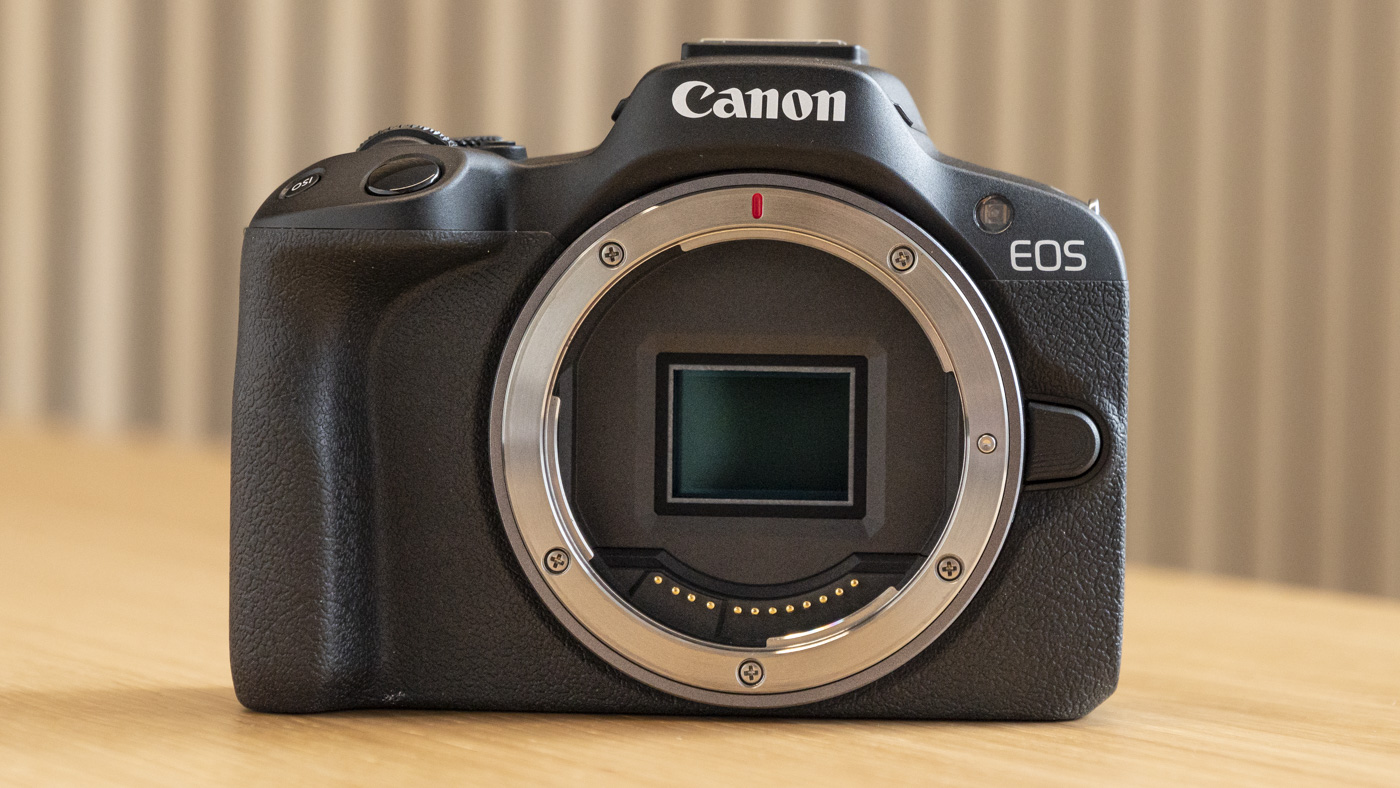
Thankfully, given the dearth of optics available for RF-S-mount cameras, Canon launched a new lens on the same day as the EOS R50 – the RF-S 55-210mm F5-7.1. That now makes three crop-sensor lenses, all of which are zoom lenses – there are still no primes.
Canon has some way to go in enticing photographers to its crop-sensor cameras by way of adding more and better-quality lenses – we can but hope that Canon starts to show its RF-S lens line some of the love it’s lavished on its full-frame RF mount.
Canon EOS R50 release date and price
- Canon’s cheapest EOS R system camera
- Priced at £789.99 / $680 / AU$1,249 (approx) body only
- Also available as a kit with the RF-S 18-45mm lens
The Canon EOS R50 was announced on February 8, 2023, and is set to hit the shelves in March. It’ll cost $680 / £789.99 body-only. Kits will also be available, which is the only way to get your hands on the camera in Australia – the camera in a kit with the RF-S 18-45mm lens will set you back £899.99 / AU$1,399 (approx $800 in the US). A twin-lens kit will be available in the US and Australia, bundled with the RF-S 18-55mm and the new RF-S 55-210mm for $1,029 / AU$1,699.
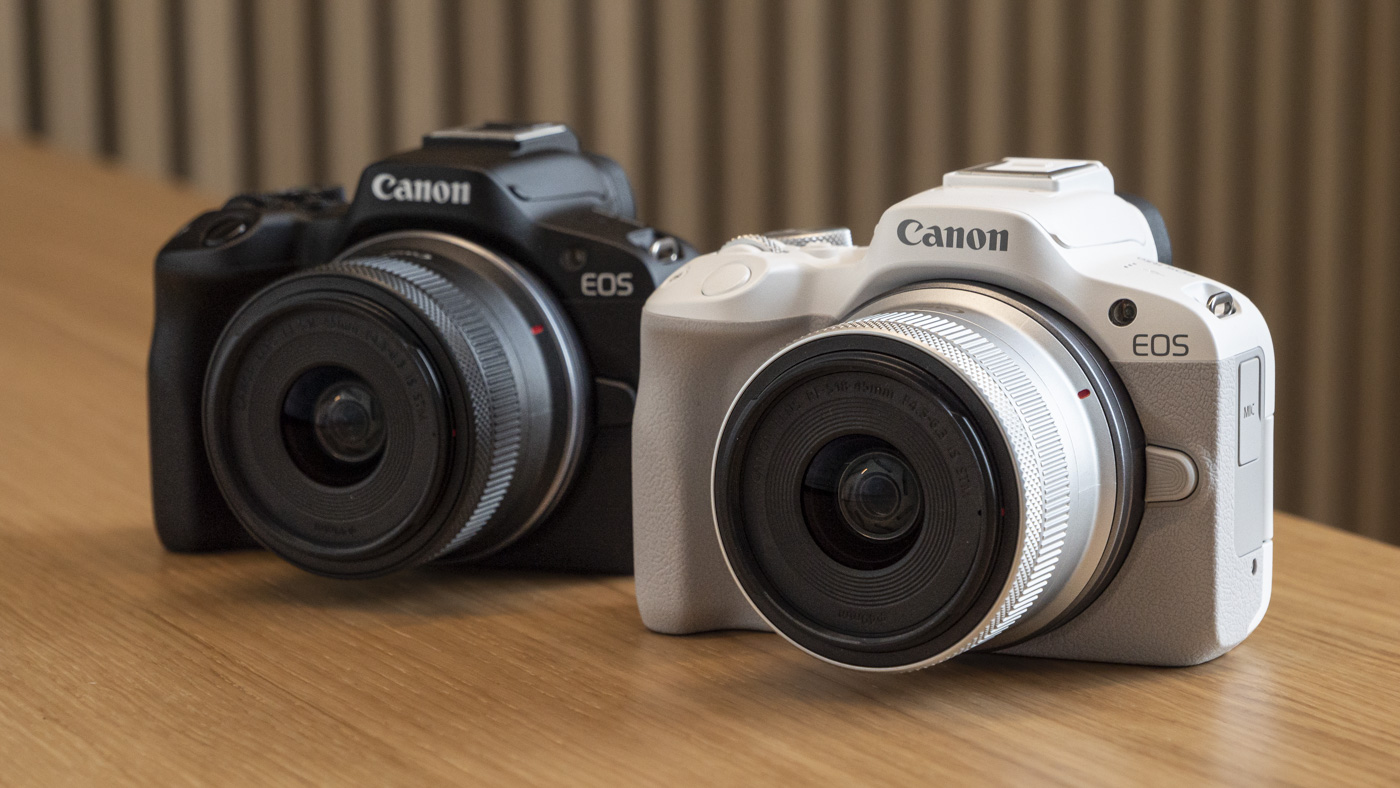
There are two colors to choose from, black and white, with the white kit option including a silver version of the 18-45mm lens.
The new RF-S 55-210mm lens launched alongside the camera will set you back £429.99 / $400 (approx) / AU$649 on its own. In addition to those three RF-S lenses, the EOS R50 can also be used directly with any of the full-frame Canon RF lenses with no adaptor needed.
Canon EOS R50: design
- A true entry-level camera with few external controls
- Conventional mini-DSLR-style design with similarities to the EOS R10
- Smallest and lightest RF-mount camera
Another Canon EOS R system camera, another mini-DSLR-style design. Canon has played it safe with the entry-level EOS R50, which is basically a slimmed-down version of the EOS R10, omitting a few external buttons and joystick. That’s less scope for customization, and a greater emphasis on auto functions, and using the vari-angle touchscreen.
The result is Canon’s smallest, lightest and simplest EOS R system camera. It’s even smaller and lighter than the EOS M50 II, which is another point of reference. We’re talking a mere 12g, but at 375g including card and battery, the EOS R50 is a tiny little thing.
The EOS R50 has a slightly smaller handgrip than the EOS M50 II, but it still offers enough purchase for a secure grip with those small-aperture zoom lenses like the RF-S 18-45mm.
During our hands-on time with the EOS R50, we also used the camera with the new and larger RF-S 55-210mm F5-7.1 lens. It’s a comfortable pairing still, though lenses that are any larger and heavier are going to feel front-heavy.
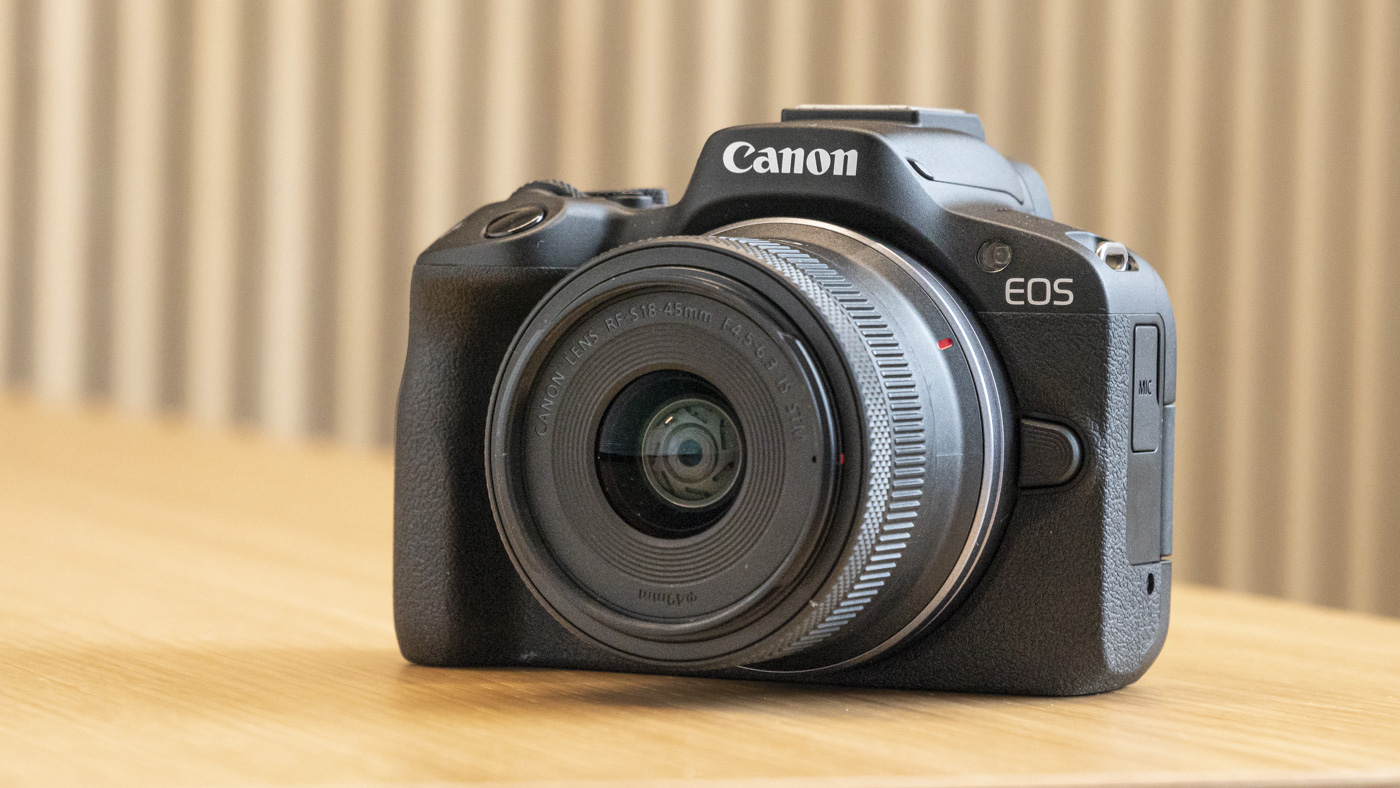
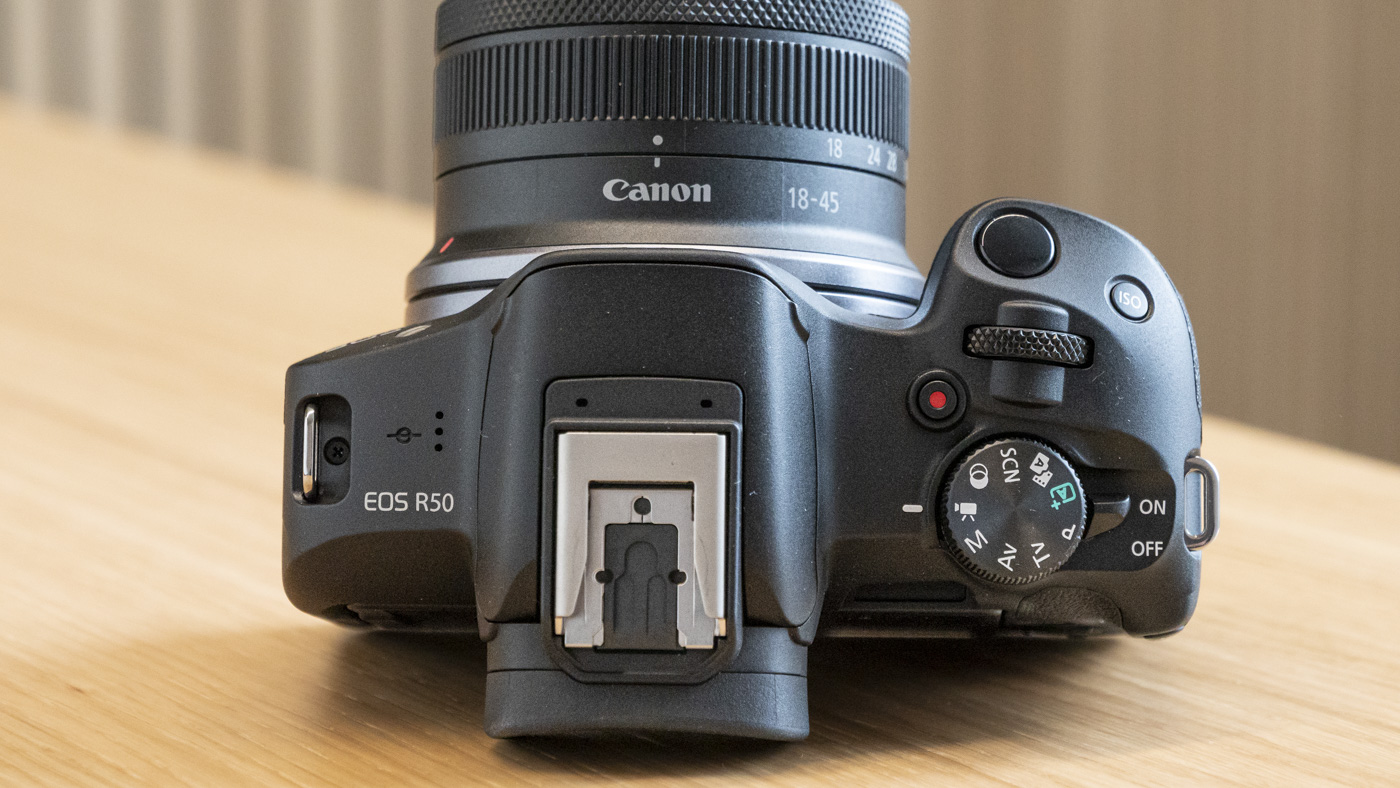
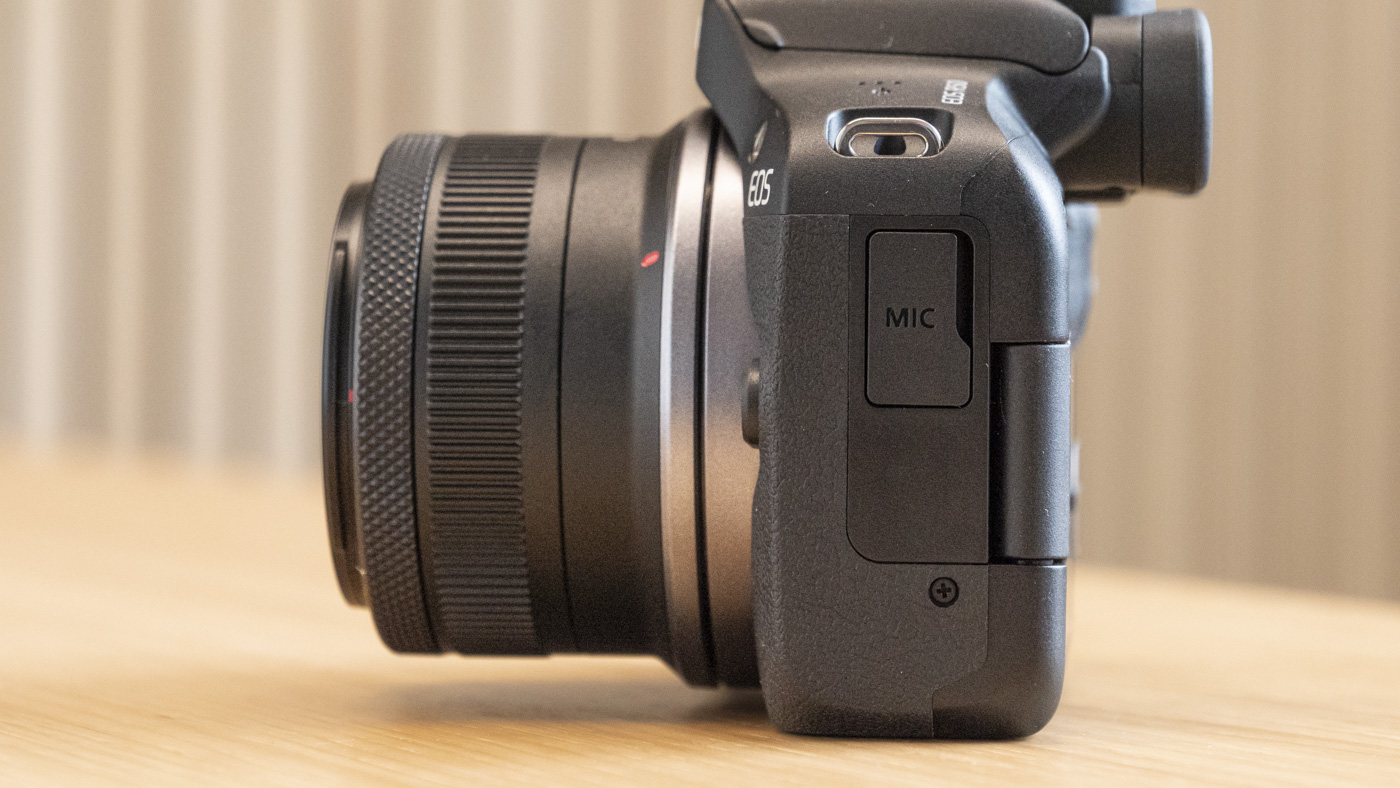
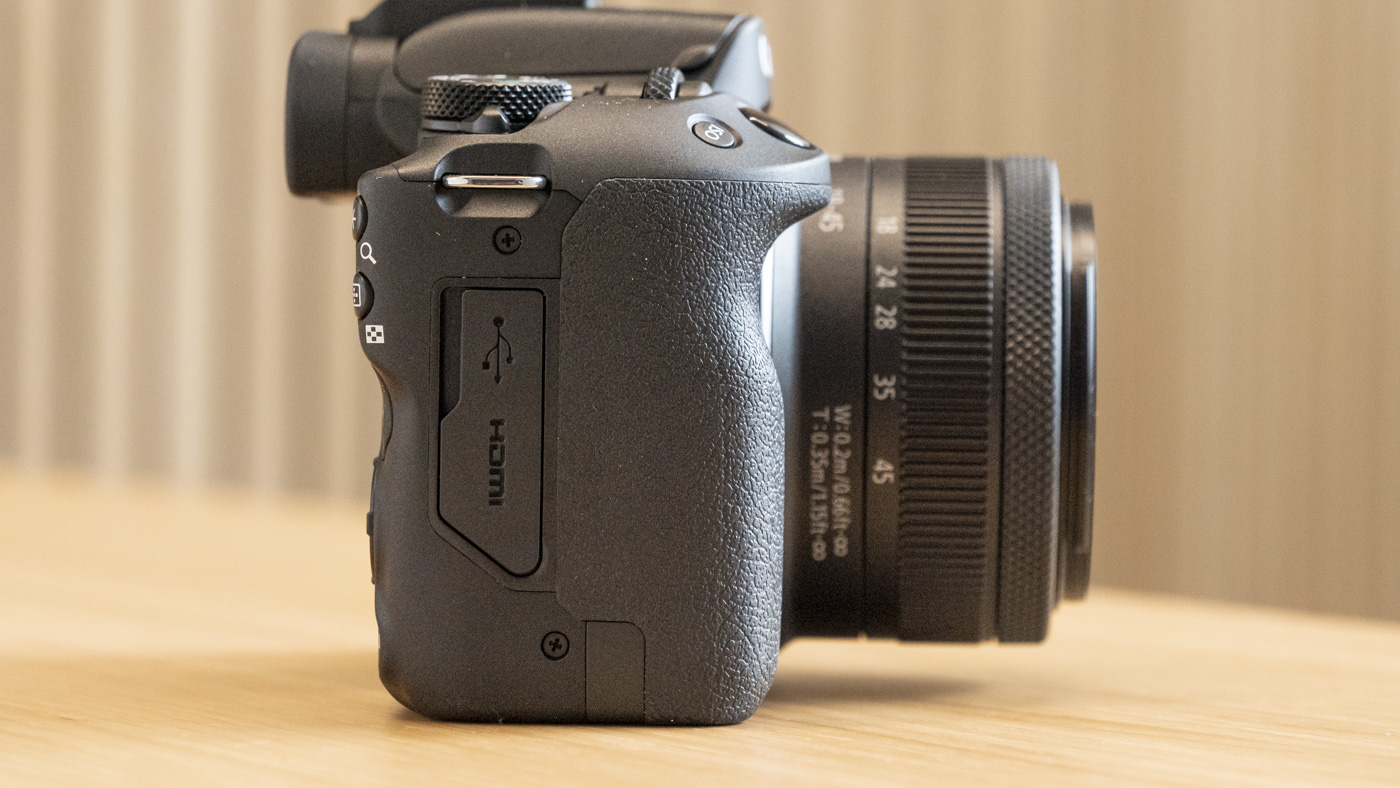
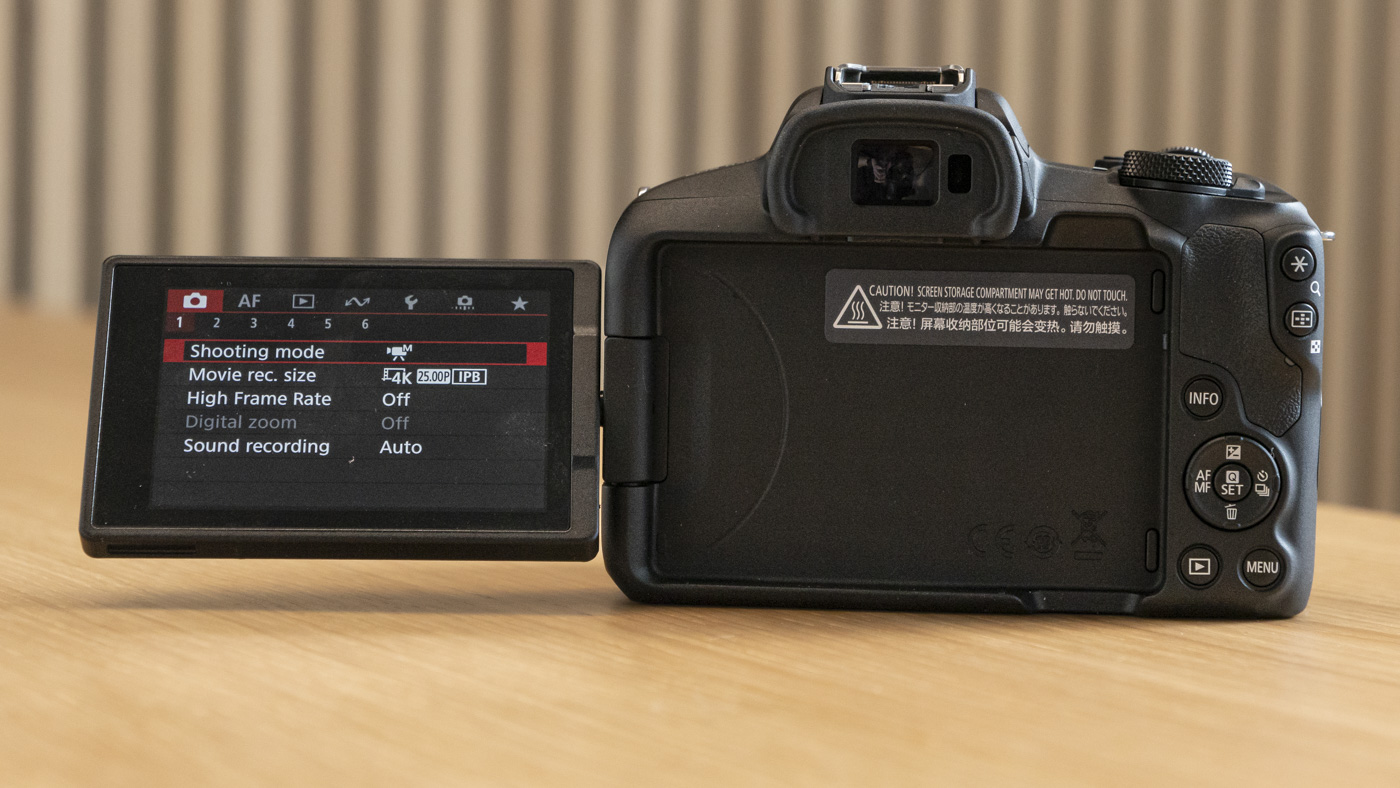
When you pair any of Canon’s crop-sensor cameras with full-frame RF lenses, there’s a 1.6x magnification factor. You’re only using a central section of the image circle, and that ‘crop’ can be either a blessing or an inconvenience, depending on what you’re shooting. Either way, you’re not making the most of what will be a heavier lens.
As a vlogging camera, the EOS R50 covers most of the bases, with a mic input for better-quality sound than the internal mic, plus a vari-angle screen that can flip out to the side of the camera for selfie shooting. There’s no headphone jack to monitor sound, although few entry-level cameras go that far.
Otherwise, the control layout is simple, and the EOS R50 is a camera that steers users towards auto control via its touchscreen, with a handy Guided UI that takes you through the basics. Manual exposure control is more limited, via a single control dial and an ISO button.
Canon EOS R50: features and performance
- Same power as the EOS R10
- Decent autofocus for an entry-level camera
- Guided UI helpful for beginners
In terms of performance, the EOS R50 is a known quantity, as it packs the same Digic X processor, 24MP crop-sensor, and Dual Pixel CMOS AF II autofocus system as the EOS R10. To put that into context, we rated the affordable EOS R10 as a best-in-class camera, and the EOS R50 is even cheaper.
That Digic X processor unleashes the latest autofocus tech and impressive burst-shooting speeds, although 15fps continuous shooting sequences are limited in duration by the EOS R50’s buffer.
It’s a camera that’s more suited to everyday photography than it is for serious action, for which a higher-level camera like the EOS R7 is a better option.
There are subtle differences to Canon’s Dual Pixel CMOS AF II autofocus system here – a system that’s also found in significantly more expensive cameras like the EOS R3. For instance, in the EOS R50 subject detection is simpler – eye detection is available, but you can’t choose which eye to focus on.
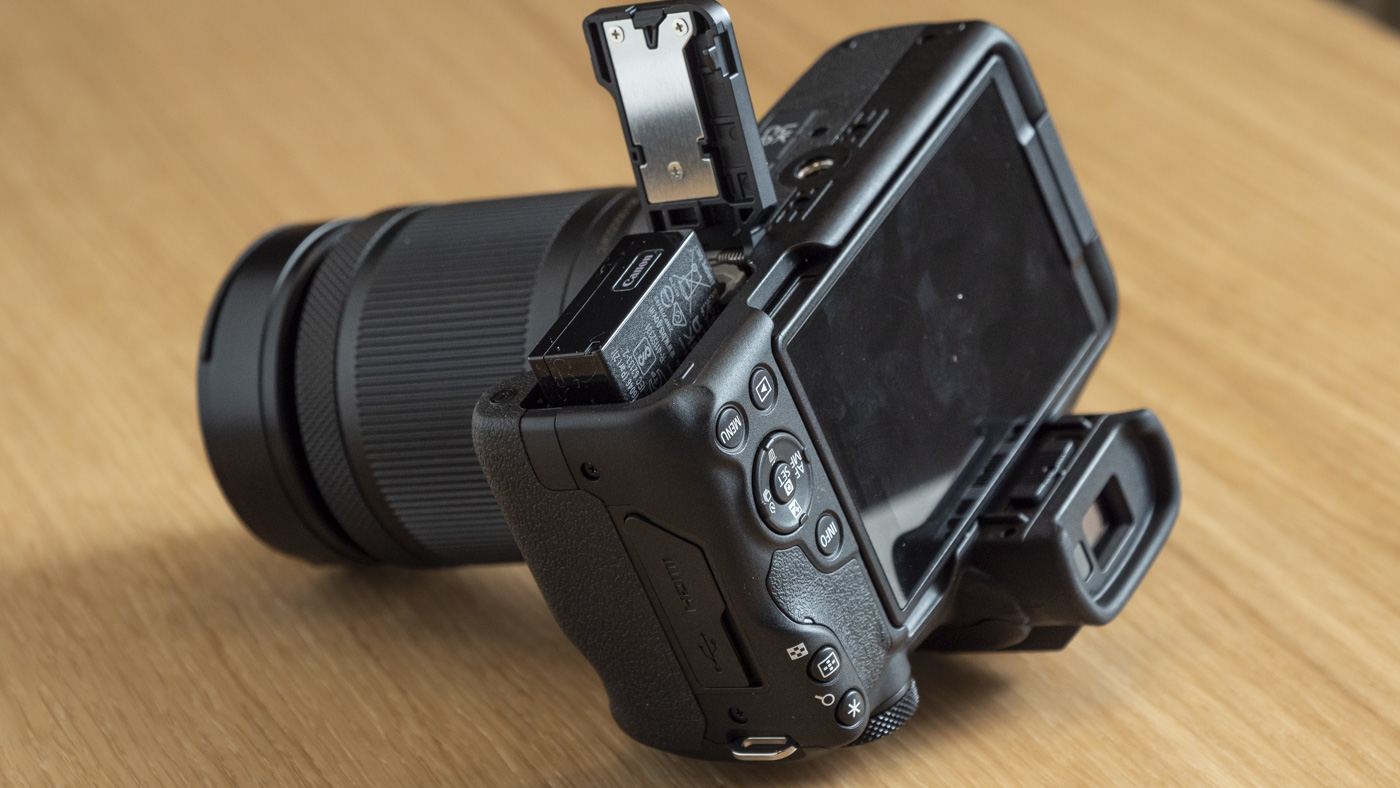
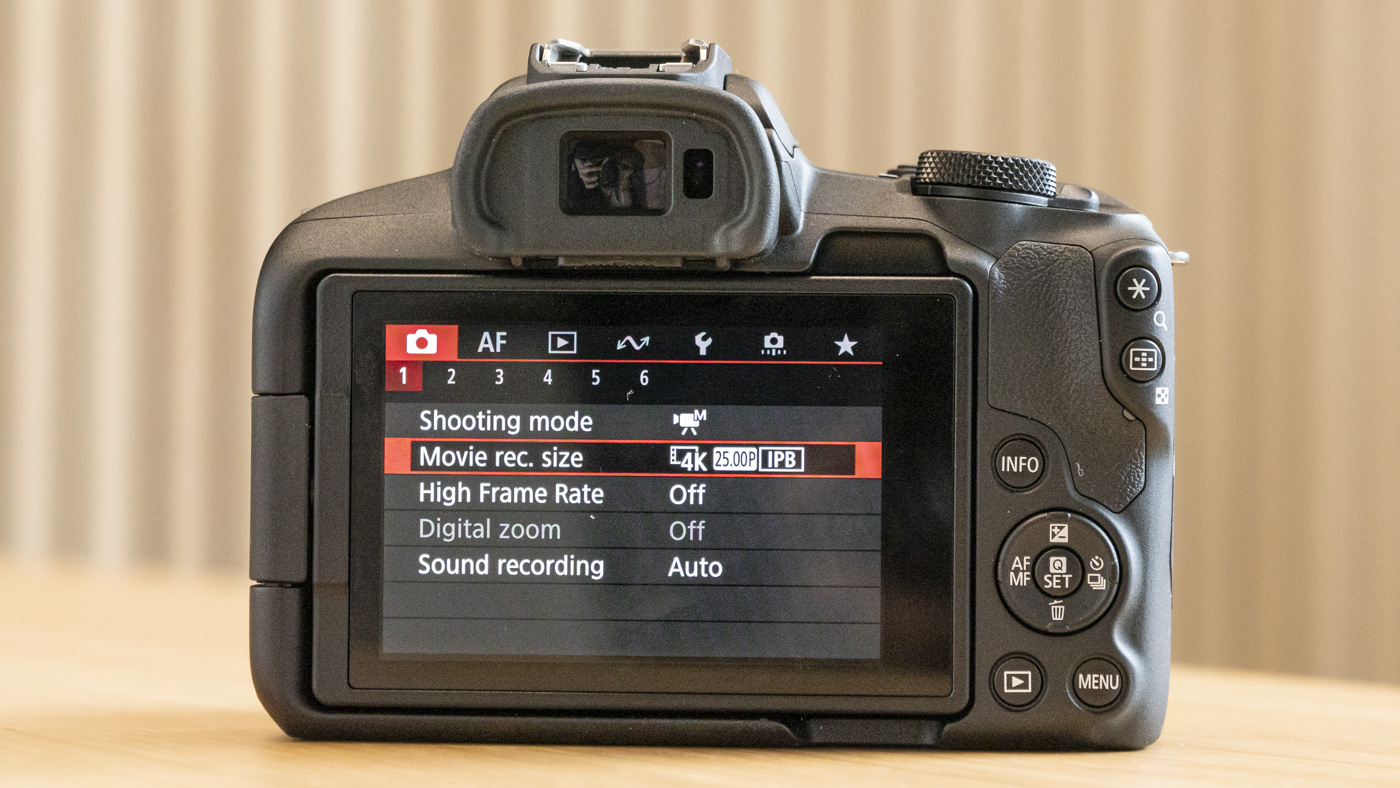
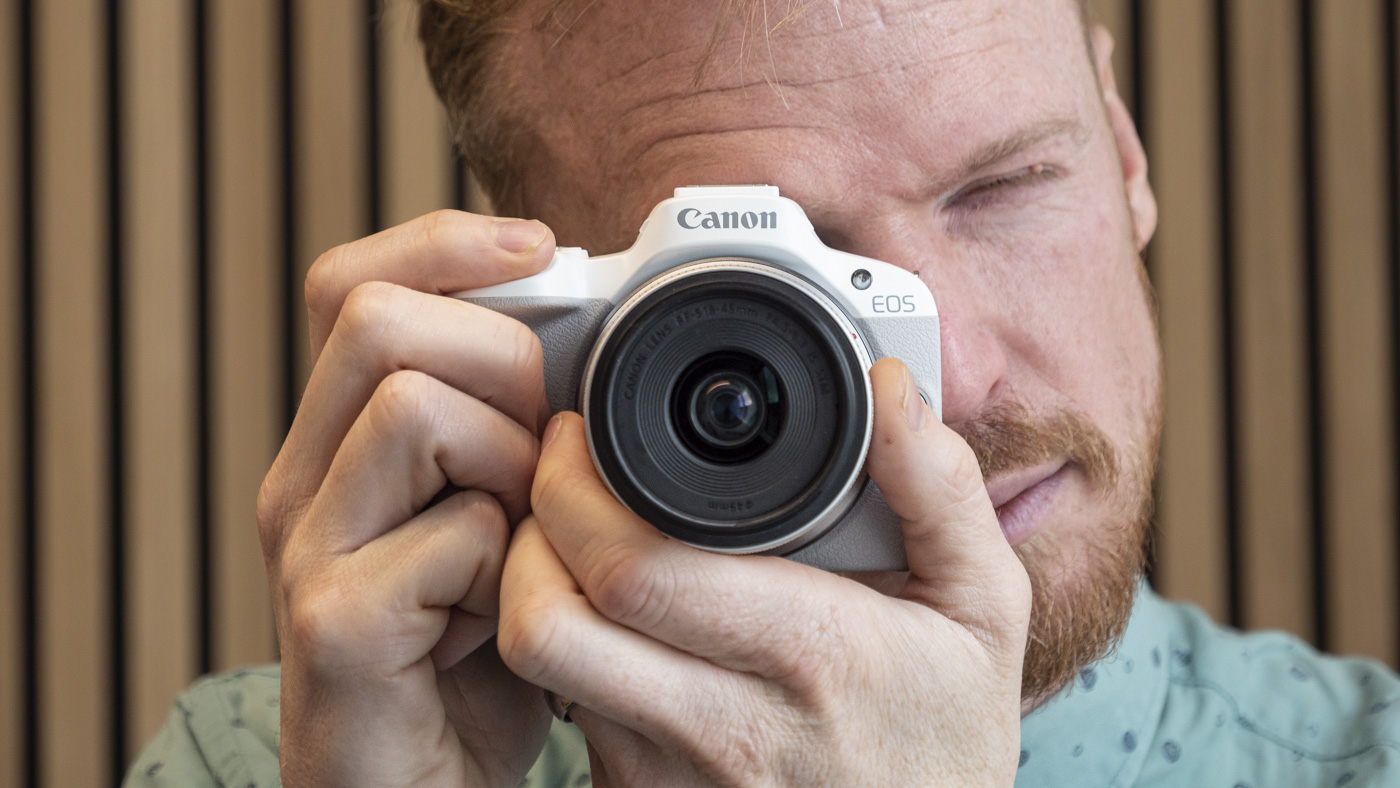
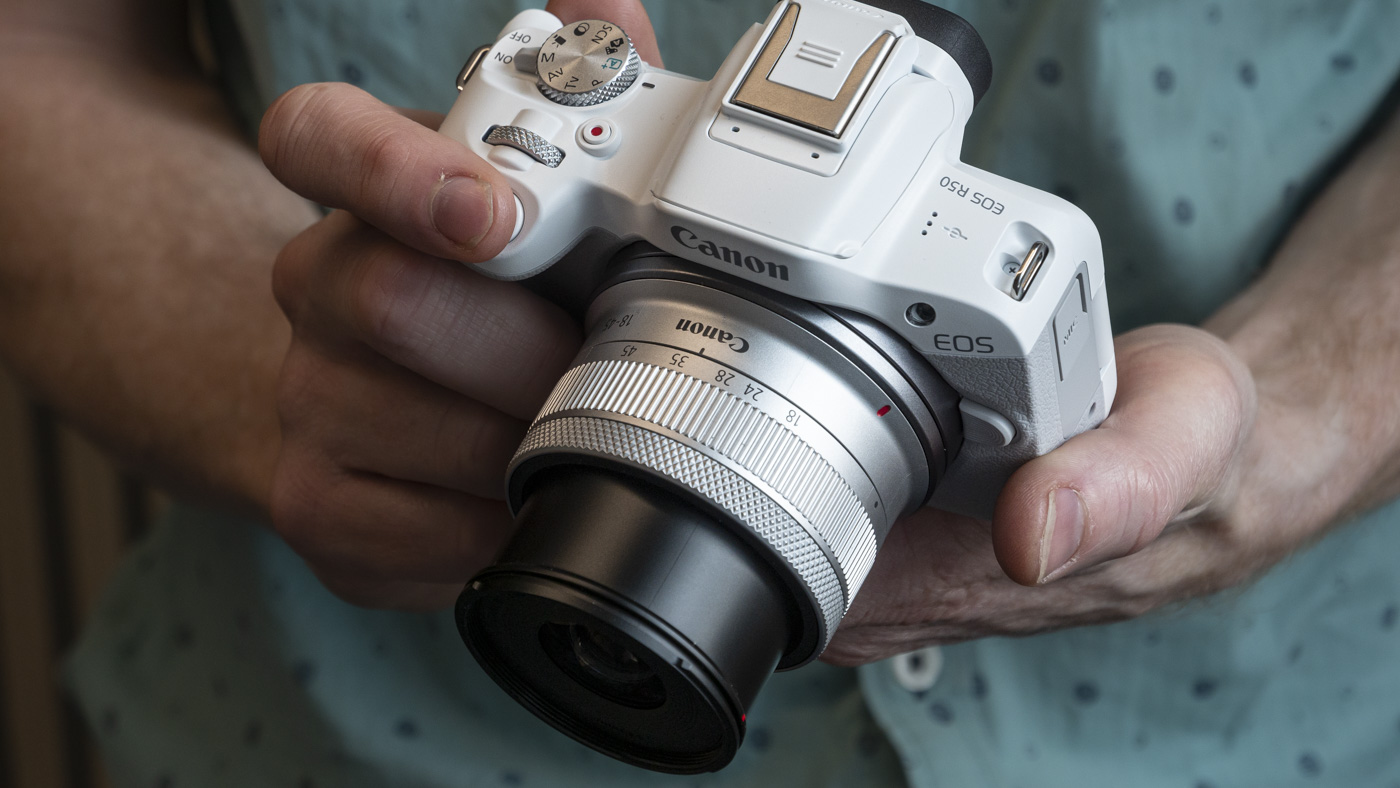
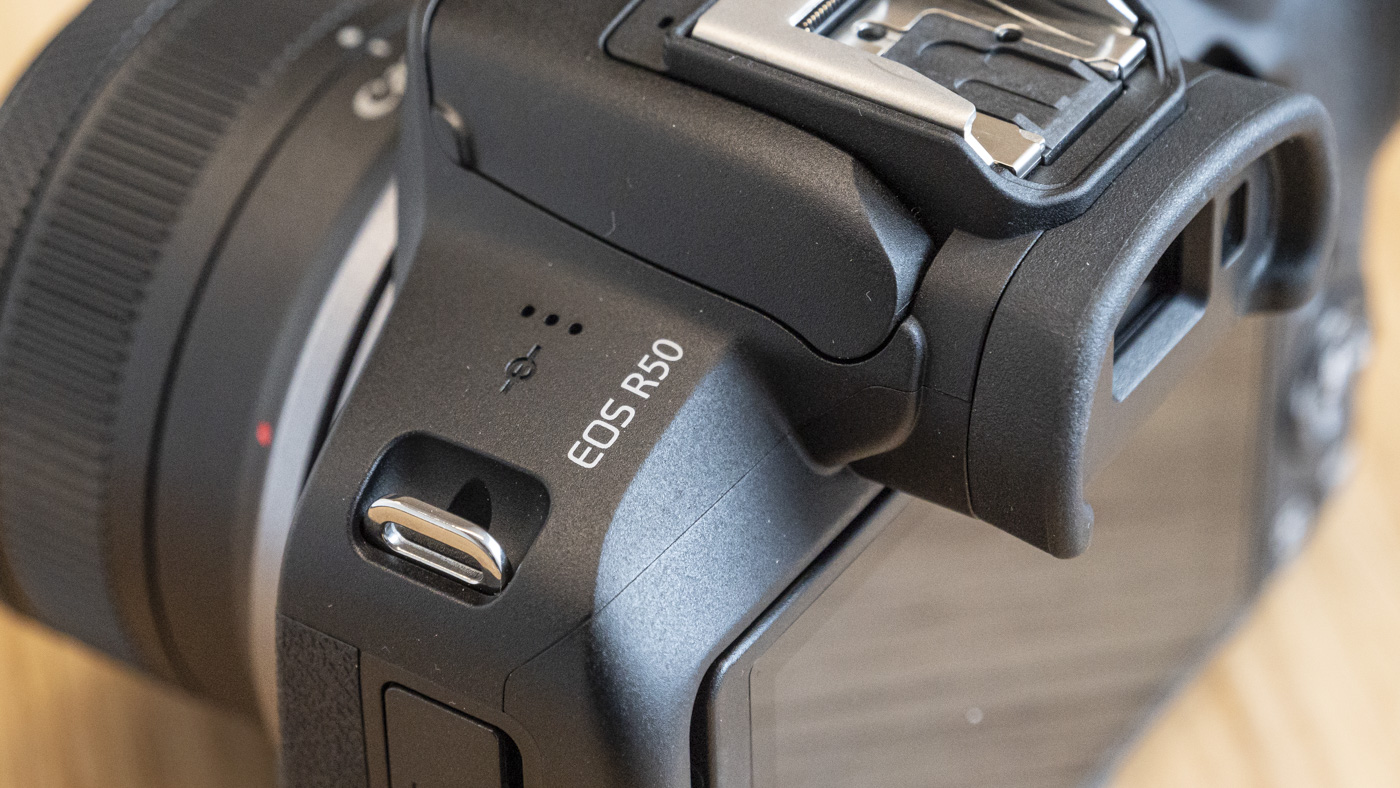
Video recorded at 4K / 30p is taken from oversampled 6K, although there’s no 4K / 60p option, as in the EOS R10. Video cropping can be a point of contention for some, and understandably if you need to shoot wide-angle half-speed sequences, but on the flipside you can get extra reach when your lens isn’t quite long enough.
When the camera is in portrait format, it’s possible to record vertical 9:16 video, which is a supremely handy in-camera option for those shooting video for social media.
The Guided UI is a really useful tool for photography newbies, too. You get the usual Scene Intelligent Auto modes with the camera optimizing the settings for subjects such as portraits and landscapes, plus panorama and creative bracketing. The latter takes one photo, and applies three extra different looks that are automatically selected by the camera via subject detection.
Canon EOS R50: image and video quality
- Same 24MP sensor as the EOS R10
- Sharp 4K /30p video from oversampled 6K
- Only three RF-S zoom lenses available
There’s a lot that will be familiar to Canon users in the EOS R50, namely Canon’s 24MP APS-C sensor with Dual Pixel CMOS AF built-in that has been around for some time now, in Canon’s DSLRs and EOS M cameras, and now the EOS R system.
The technology has evolved with the EOS R system, most notably in autofocus performance – you’re more likely to get sharp focus with these latest mirrorless cameras across a wider variety of shooting scenarios.
Remove the indirect impact of autofocus performance, and picture quality remains largely the same, and similar to that from APS-C rivals like the Nikon Z50, while the Fujifilm X-T30 II has a back-illuminated sensor design which in theory gives it the advantage at higher ISO sensitivities.
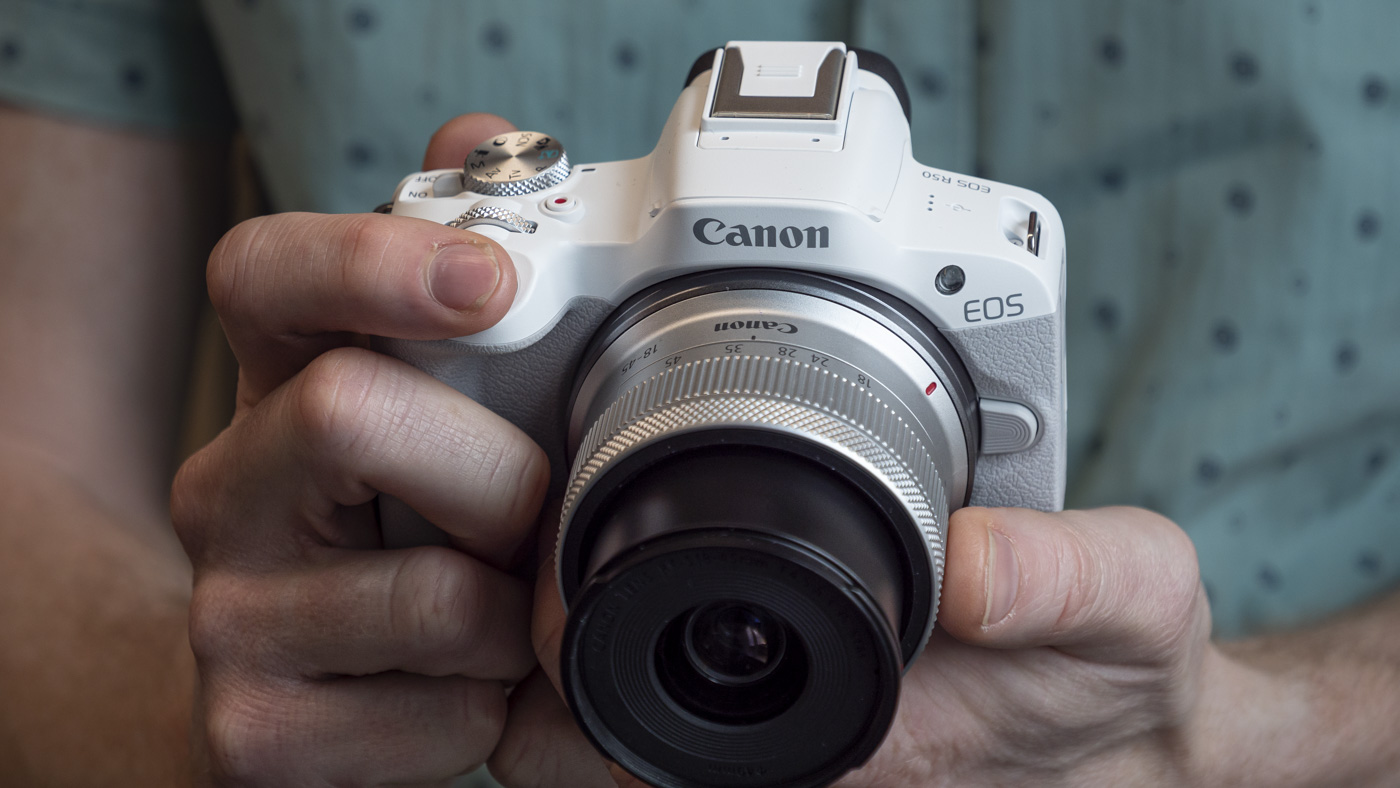
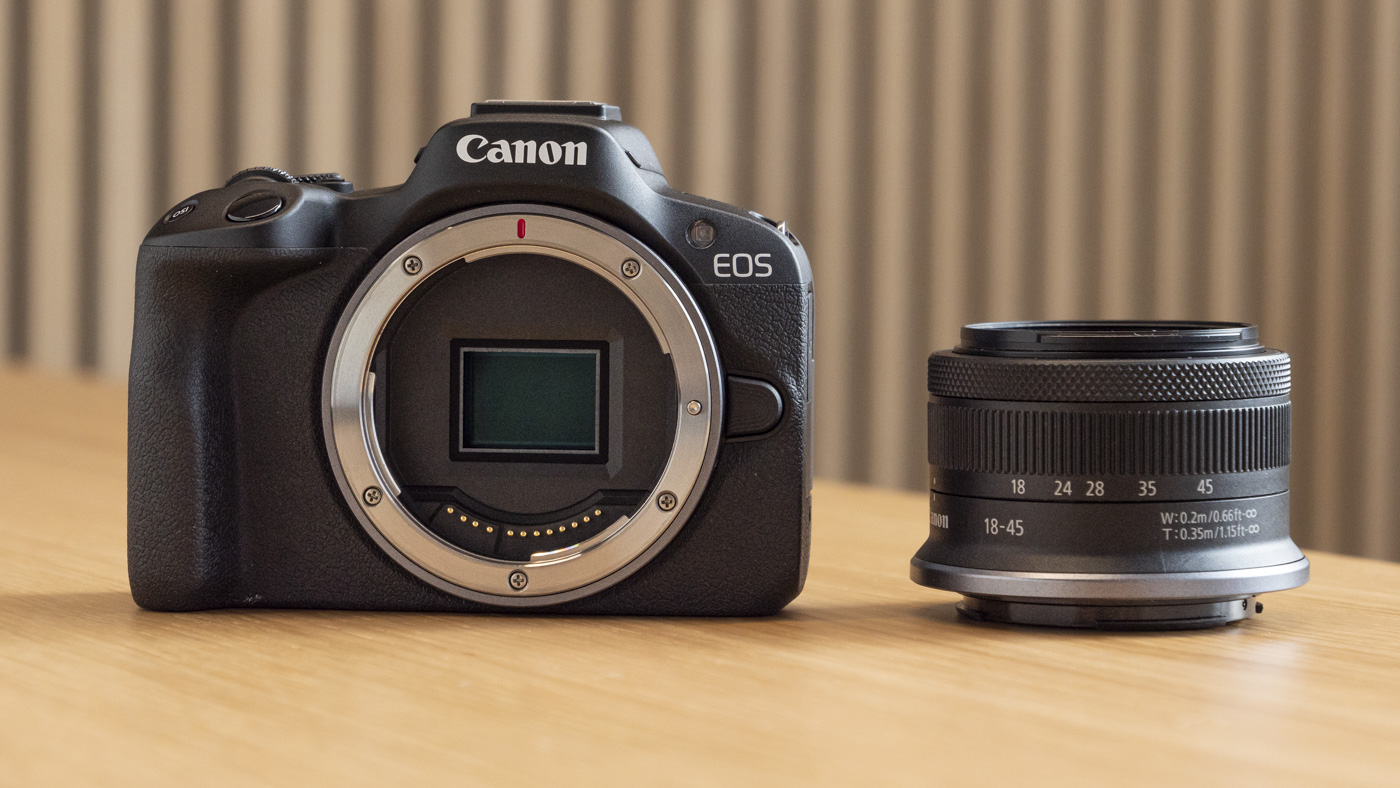
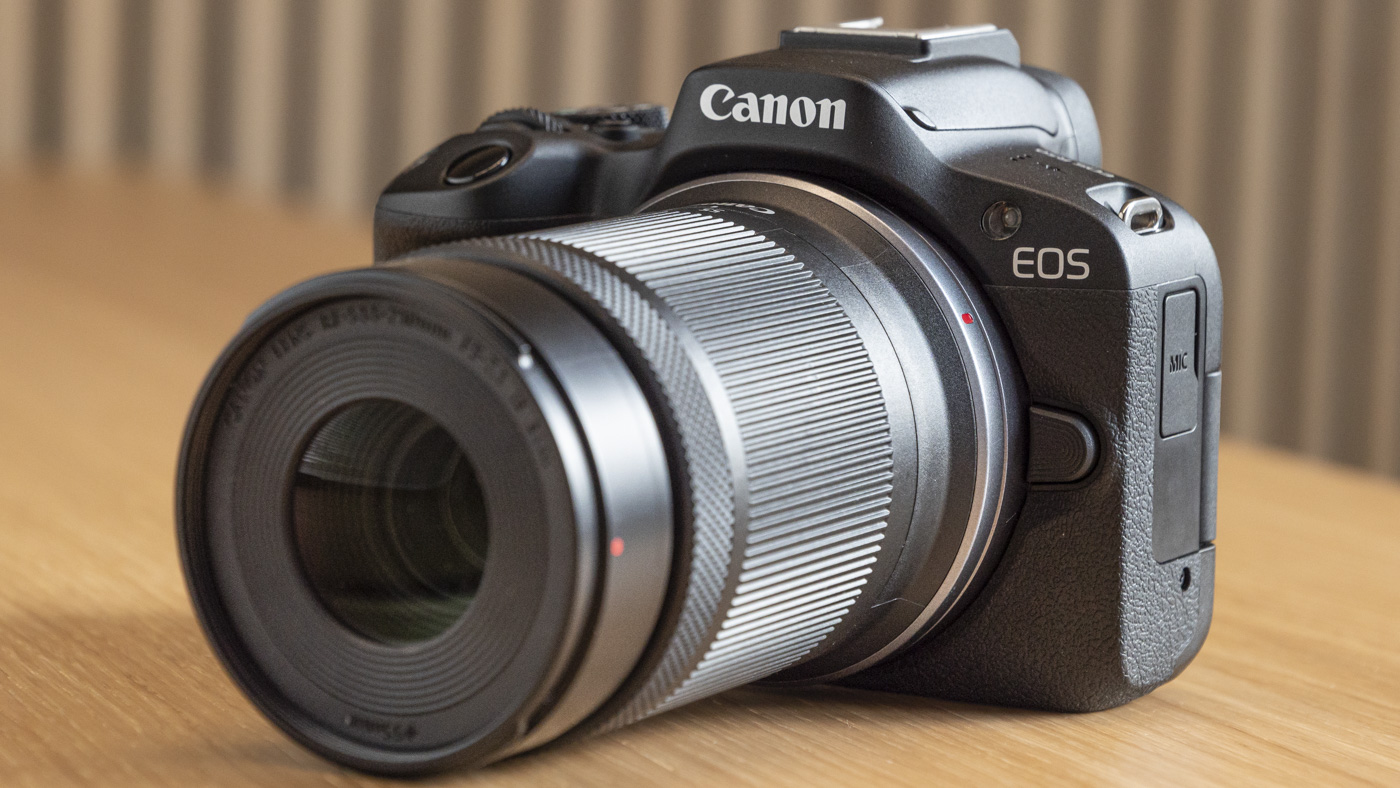
Color-wise, photos and videos are pleasant straight out of the camera – this is a Canon camera after all. Filmmakers don’t get a log color profile option that would give greater flexibility for grading the look in post, but reality check – this is a camera for beginners not seasoned shooters. The ‘Natural’ color profile is probably the best alternative.
The EOS R50’s respectable video skills are evident in the crisp and clean 4K / 30p videos oversampled from 6K. You won’t find slow-motion 4K / 60p here, but there are more frame rates available in Full HD. Another expected omission is in-body image stabilization, so you’ll need to find clever ways to steady the camera for run-and-gun videos.
Lens availability is the main bone of contention. As we’ve said, there are only three small-aperture zoom lenses available today. The EOS M system has only realized six lenses before falling out of favor almost entirely; we hope that history doesn’t repeat itself with the RF-S mount.
Native lenses are one thing, but the EOS R50 is compatible with full-frame RF lenses, too. Whack on an RF prime lens, open the aperture up, and you can get seriously next-level photos and videos compared to what you can get with a smartphone.
Canon EOS R50 early verdict
The EOS R50 feels like the unofficial end of the Canon EOS-M system, acting as a direct alternative to the EOS M50 II. It also packs a similar feature set to triple-digit Canon DSLRs like the EOS 250D, although autofocus and video performance have moved on significantly in mirrorless tech.
This is now the smallest, lightest, and simplest entry point into Canon’s EOS R system. Yet it’s also another mini-DSLR-style camera, and largely indistinguishable from the EOS R10. We think Canon could have been a little bolder with the design by getting rid of the viewfinder altogether for two reasons: the target audience of beginners and vloggers have less need for it, plus the viewfinder display itself is too small to be particularly helpful anyway.
A shift to a viewfinder-less design would result in an even smaller and lower-cost camera. Perhaps an EOS R system camera in this vein is still to come – for example, a Canon EOS R200 inspired by the EOS M200.
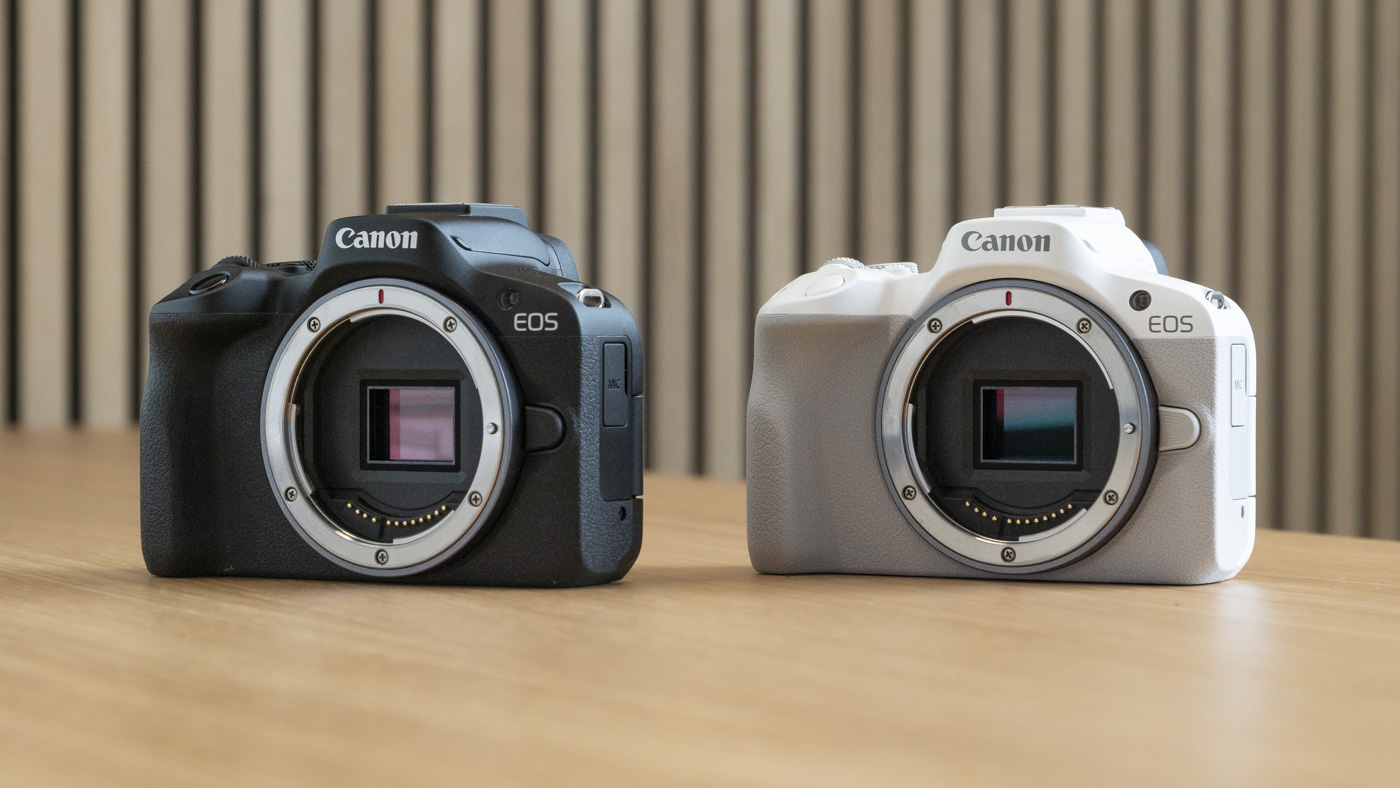
Design aside, the EOS R50 is a capable snapper, and perfect for a beginner who wants the camera to do the lion’s share of the work when taking pictures. The 24MP sensor and Digic X processor cover everyday scenarios, while there are some nifty video features such as vertical shooting.
We need to see more RF-S lenses before we can wholeheartedly recommend this system. But as for the camera itself, we think the EOS R50 may prove to be more popular than the EOS R10. Whether it is a ‘better’ choice is something to be unpacked in our upcoming full review.
0 comments:
Post a Comment